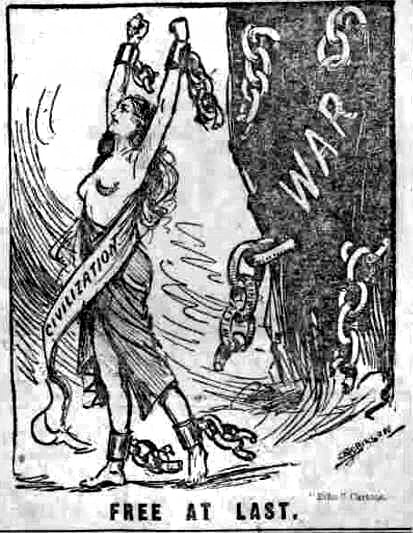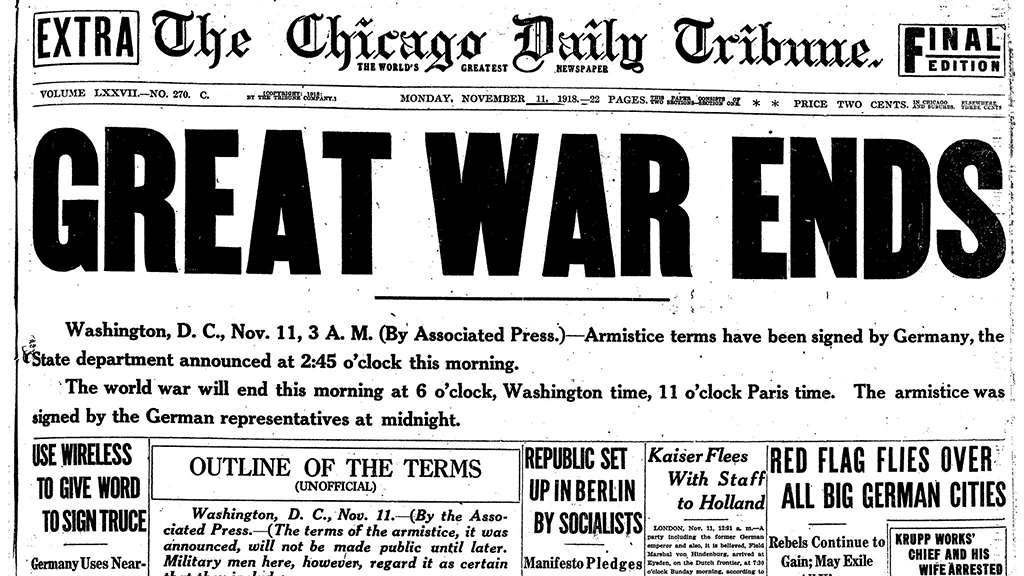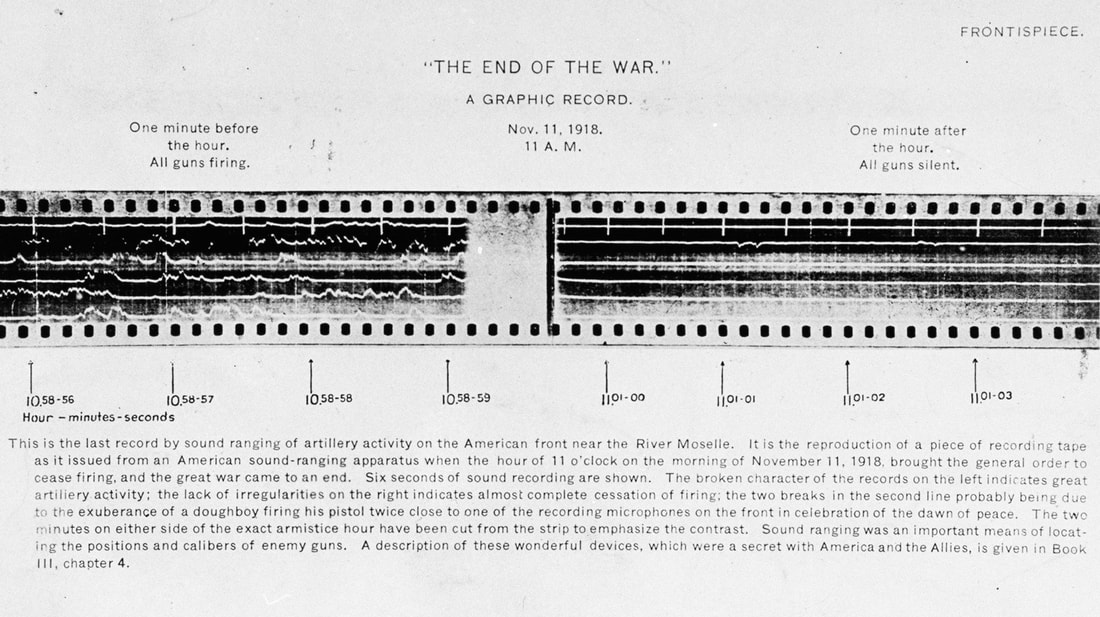I took special interest in the centenary of the ceasefire (armistice) that ended the 1914-1918 war.
I have written on these pages before about centenary events around the tragic 1914-1918 war, including twice about Nov. 11th:
- Post 224: My Great-Grandfather’s Piece of World War I (August 2014)
- Post-242: November 11th, 1918 (November 2014)
- Post 360: Armistice Day, and War Memory (November 2017)
- Various other posts mention the 1914-1918 war to some extent; search site:Yule-tide.com “1914” or site:Yule-tide.com “1918” to see these.
The Best “November 11th, 1918” Visual for Commemoration
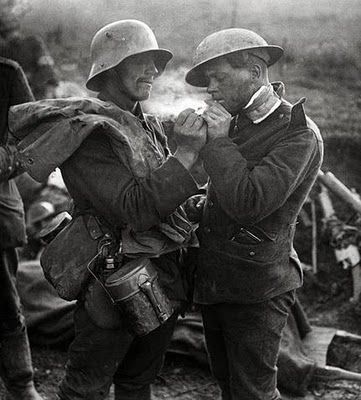
Scenes like this (right on desktop version) were repeated across the Western Front on November 11th, 1918, according to reports of those who were there. It seems surreal that the opposing armies immediately put down their guns and began intermingling and celebrating the end of the fratricide at last, in the hours after the ceasefire.
I propose that the above photo is the best possible commemoration of the Armistice, better than any thousand-word write-up anyone could come up with; some pictures, as they say, are worth more. (Though the photograph is not from Armistice Day itself [Nov. 11th] itself, it may as well be; it closely parallels the experience of hundreds of thousands that day.)
The picture symbolizes, at one level, the triumph of humanity and fraternal feeling through/over even the worst of politicians’ blunders. I think it is symbolic, too, of the kind of the European unity and friendship that “could have been” (i.e., there was never any need at all for the 1914-1918 war.) At once both positive and tragic.
I tried to do my own small commemorations marking the exact 100th ‘hourly’ anniversaries of both the signing of the armistice and its much-more-famous implementation later that day (11 AM Paris time), though there was some confusion to get through about “when,” in today’s time, 11 AM Paris time would be, tricky because of time zone changes and Daylight Savings Times going in and out of effect.
All press reports from the time say the war ended at 6 AM Washington, D.C., time and 11 AM Paris time, five hours difference:
|
It should be six hours’ difference (Paris at GMT+1 and Washington, D.C. at GMT-5 is the way it is today). Daylight Savings Time originated, it is said, with a German Army plan to maximize war efficiency in 1916, and was adopted by most others after that. But both USA and France had reverted to Standard Time by November. So what is the origin of this 5-hour difference? I learn now from the Time in France wiki article that France used GMT+0 from 1911-1940, five hours ahead of U.S. EST, before returning to GMT+1 during and after WWII and ever since. This means the war in 1918 ended at noon Germany time because they had always been on GMT+1. In today’s times, then, that’s 6 AM EST, 11 AM UK (GMT), and 12 Noon (today’s) France/Germany time. The armistice agreement was signed six hours earlier, Midnight EST (11:59 PM Nov. 10th). Here is how my time was spent in 2018:
|
- Six hours later (6 AM EST) [the hourly centenary of the end of the ceasefire and end of the war]. The firing is said to have continued until the very end of 10:59 AM (5:59 AM EST). It is almost haunting how impressively tight military discipline was in that everything stopped at precisely 11:00 AM, down to the second:
As the hundredth ‘minute’ anniversary of this remarkable moment passed, I stood in front of the door about to depart to McDonald’s. By 7 AM I am at the memorial to General Pershing (commander of U.S. Forces in the war) in downtown Washington, D.C. for lack of anything better to do, and not wanting to sleep through it or go about things as usual.
The small and widely ignored Pershing memorial is the closest Washington, D.C. has to a ‘national’ WWI Memorial, though that is changing: A private group is sponsoring a more substantial WWI memorial (picture of their promotional poster above). It will be steps west of the existing General Pershing statue (pictured above).
A group of boy scouts (pictured above) was slowly assembling at Pershing Park, apparently to practice raising the flag and marching around. They must have been doing something ceremonial later that morning/day. It was only 7 AM by this time, and a Sunday morning.
I don’t expect whatever was coming up later that morning/day would have much fanfare. It is a forgotten war, after all, and a war that is hard to be very positive about. It is pretty low on the average person’s radar.
So what else happened on November 11th, 1918? I keep coming back to the accounts of the surreal-sounding, party-like atmosphere of the midday hours across the front. The imagery of the front-line soldiers of the opposing armies leaving (what had just been) their firing positions, approaching the other side through (what had just been) No Man’s Land, cheering, greeting one another, soon celebrating together. It was apparently a very large number who did this all across the front.
A New Year’s Eve-like atmosphere, maybe, but on larger scale. More joyous than that period after a run-of-the-mill Dec. 31st 11:59 PM. (As in the New Year, though, a new era did begin symbolically at that moment….but that’s another, political-cultural, story, one the men streaming across No Man’s Land to greet their fellows across the other side couldn’t have known.)
How can such things happen? I imagine it must have started with a hardy, curious, and/or adventurous few at first, and when they showed the way (the “Demonstration Effect” — I am doing this and I am not being killed, so you can, too), soon thousands, hundreds of thousands, were involved. And a few shots were all it would have taken to spoil it all, yet none came from any side. It all became as a big picnic, or “European family reunion” after the dark fog of war lifted.
U.S. flying ace Eddie Rickenbacker (1890-1973), having heard the armistice would be coming down at 11 AM, snuck his plane out (up) late that morning so he could witness it. He recounts what he saw in his autobiography.
In a scene fit for an epic film, Rickenbacker had his plane was right over the front as the clock turned from 10:59 to 11:00 AM, giving him the “best seat” in the world to witness the armistice. All other Allied planes had been grounded; he was alone in the sky. Rickenbacker reports seeing the abrupt silencing of the guns, followed not long after by a few figures below moving towards the other lines. Then, more…
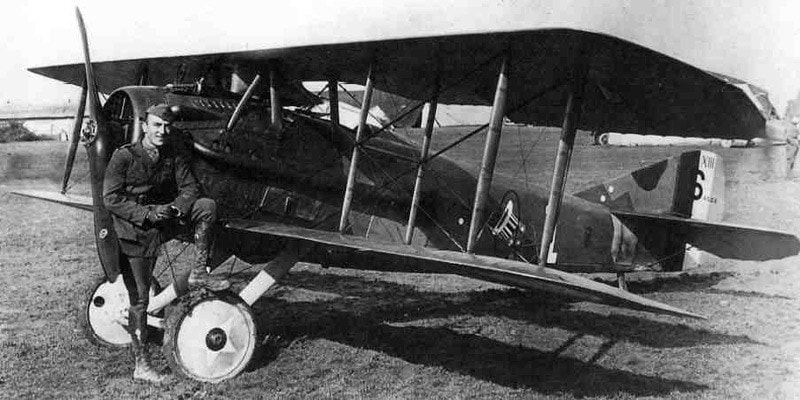
As more and more figures slowly streamed across No Man’s Land towards the opposite side, Rickenbacker says, there was no way any longer to tell the two sides apart, as the colors of the uniforms had kind of merged. He reports seeing some of the figures below appearing to physically embrace one another (in what must have been joy at this “outbreak” of peace). These 1910s-era planes were slow and low-flying. Rickenbacker would have been able to see quite a lot.
There were five hours of daylight left that day, between the ceasefire/armistice and sunset. Those must have been the best five hours of the war for many of men on all sides. It must have seemed to the German soldier, from the scenes across the front, that a Wilsonian peace really was at hand, one without anyone needing to be vanquished or humiliated or starved. (The politicians had other plans.)
I try to imagine what it was like to be a Western Front front-line soldier who wandered over into No Man’s Land in those first hours of peace. The moment you see the enemy, face to face, but he is not your enemy — and in fact never was ‘your’ enemy, just a man not so unlike you yourself.
One practical problem: You can’t speak his language. So I imagine there was a lot of that kind of joking-around that people who don’t quite speak the same language are prone to, i.e., covering/smoothing-over linguistic gaps with generous portions of lowish-brow good humor, grins, and gifts. (I have often been in situations like this at least from a linguistic-cultural angle, and can imagine how it must have been.)
It must have been that any Frontsoldat Germans with good English or French skills (and likewise Frenchman who spoke good German, etc.) would have been immediately, newly popular among their fellows and the centers of attention, as they would have served as ad-hoc translators and facilitators of the prodigious amount of attempted olive-branch communication-as-friend going on, and the gift giving.
To return to the photograph at the start of this post: The same kind of scene would have been repeated millions of times that day, across the front. That is the November 11th we ought to remember, one that symbolizes European fraternity and unity, not the death-cult that the commemorations of this day often seem to be.
Hope for civilization after all?
